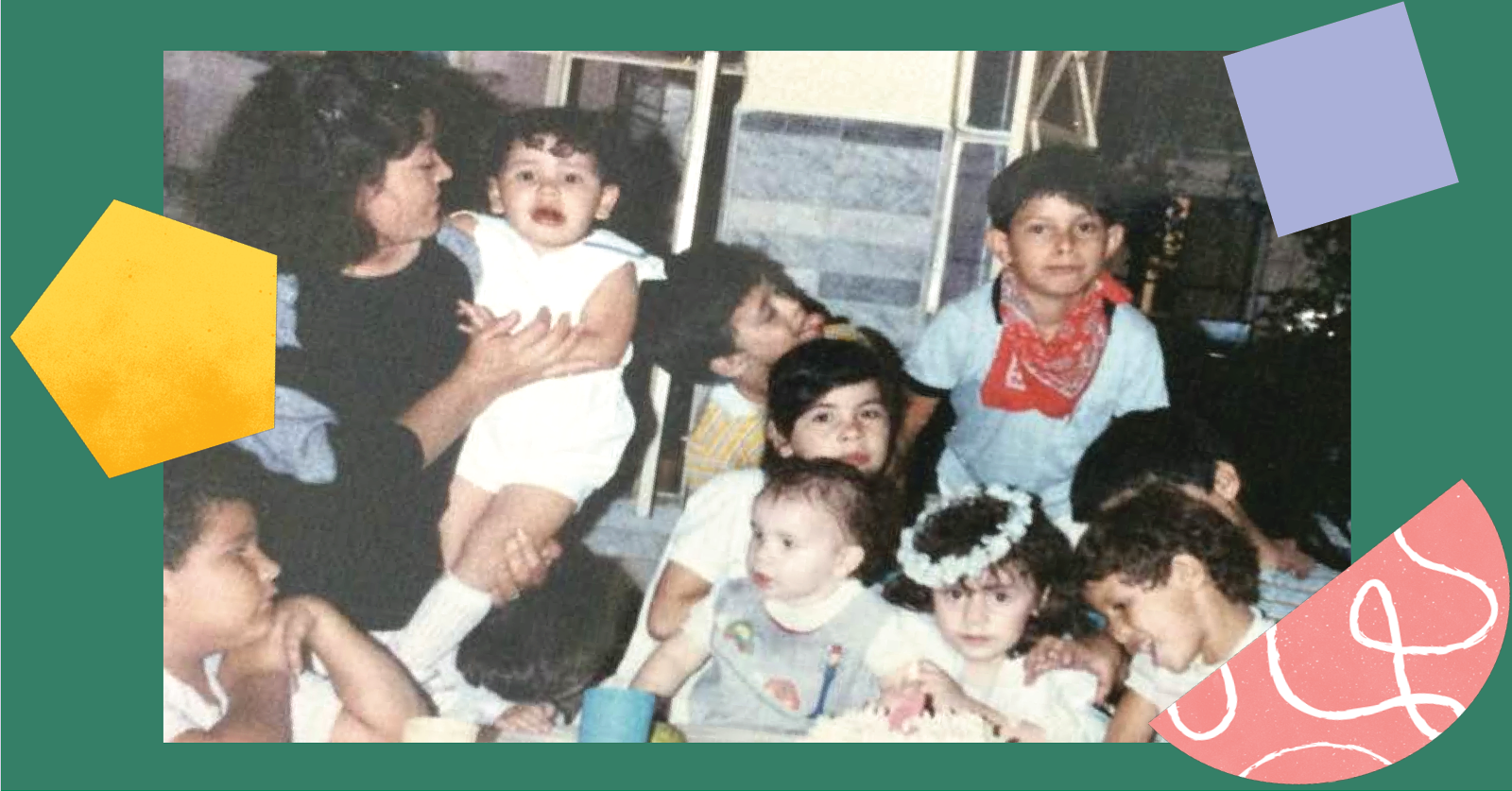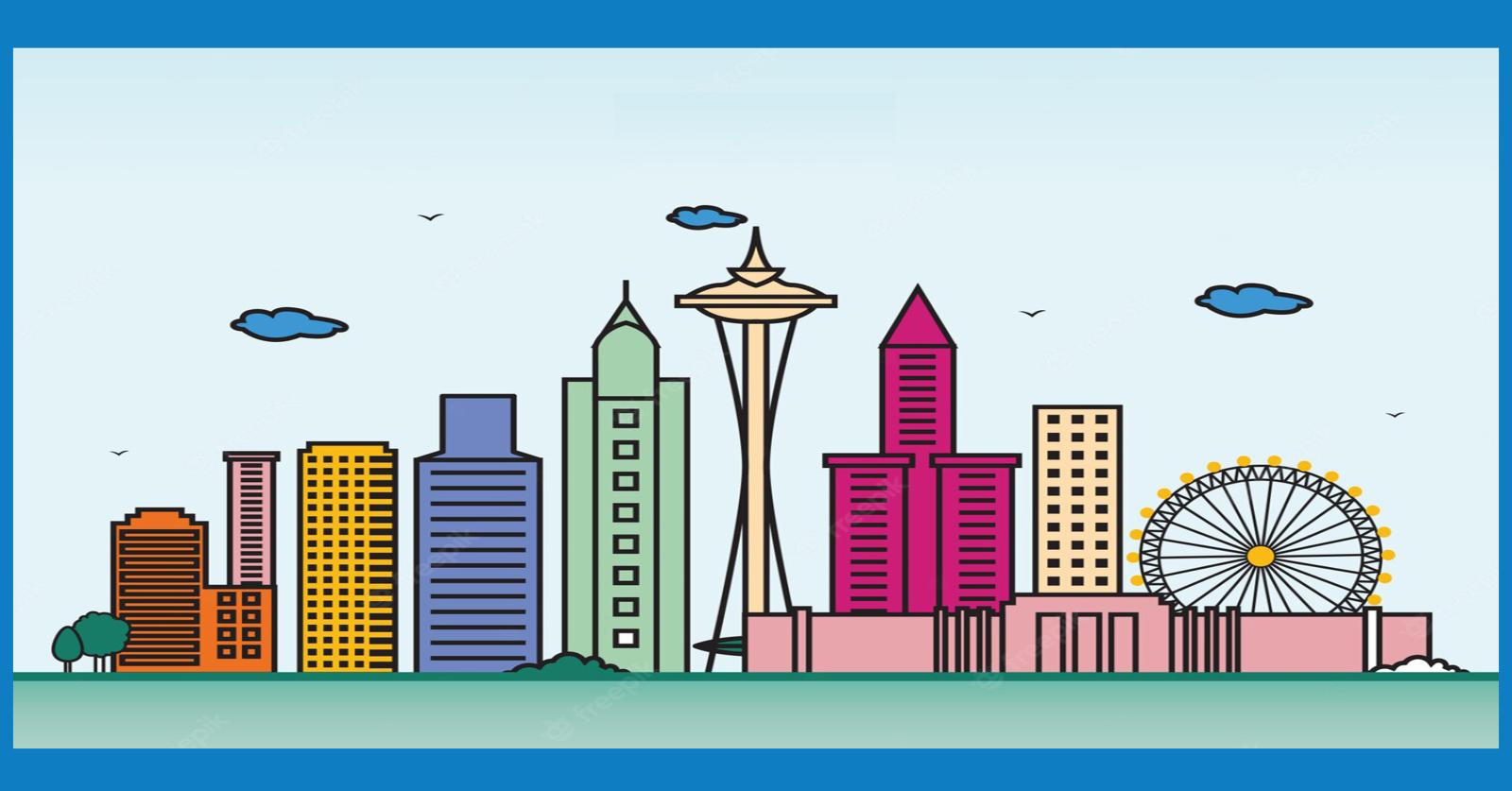Identity and self-definition: a conversation with Kinside's Shadiah Sigala

You may know Shadiah Sigala as the founder of tech platforms HoneyBook—valued at over $2 billion—and Kinside, the child care marketplace that recently raised $12 million in Series A funding and acquired LegUp, the first universal child care enrollment system. And if that’s not enough, you may have seen her on Entrepreneur’s 100 Women of Influence list.
Shadiah also just happens to be a first generation American who was born in Mexico. As Hispanic Heritage Month comes to a close, we wanted to make space for Shadiah’s unique perspective on identity, building a career as a tech entrepreneur, and the differences in how child care was managed in her family growing up versus her experiences securing child care for her own children. This conversation has been condensed for clarity and length.
Audrey: Let’s talk about your family of origin and your early life. What was the day-to-day like? Who was around you in your community?
Shadiah: We immigrated to the U.S. from Mexico when I was seven. My mom was a single mother to three young children—nine, seven, and four. She was a 28-year-old mother having just traversed from one country to the next and trying to settle. Meanwhile, she had to find a job to make ends meet, and we were poor. So the only path for her to have a job was to make sure that she was working during our school hours or that a family member could take care of us because there was no way she could afford actually paying someone to watch us.
Culturally speaking, help was very available. She couldn’t afford to pay for child care, but she could ask my aunts, my grandma, and the neighbor across the street, so I grew up understanding this informal network of caregivers to be perfectly normal and the way you were taken care of by people.
My little brother did get to go to a preschool at the local elementary and I remember my mom being thrilled when that happened because that meant that we had to pay the neighbor less to watch him. The neighbor also had a son there, so they would pick up both kids from their preschool program and watch them for a few hours until my mom got back from work. Meanwhile, we school-aged kids were responsible for walking ourselves from school to home and taking care of ourselves for two or three hours until she got home. So I never knew or saw or stepped foot inside a child care facility growing up.
Audrey: You’ve talked a little about how in your childhood and culture, child care was more of a family and community responsibility. This is very different from how we approach child care in the U.S., with the burden falling to atomized family units. Can you tell us more about those differences and the impact of each perspective on families?
Shadiah: I described my experiences when I was little, but when I grew up and became a mother myself, many of the circumstances changed. As I grew up and became a career woman, my lifestyle has become a lot more like the typical American, which is that people move away from their hometowns. That is the major thing that changed.
I moved away from my hometown and because I was moving around a lot in my 20s and up to becoming a mom, I didn’t have a community set up. So I landed in a new city, Oakland, California, and there was no village for me to turn to. Whereas my mom couldn’t possibly afford child care, at least I could. But my point here is that something’s gotta give. Us mothers and working parents always have to give on something. My mom couldn’t afford to pay for child care, but at least she had this informal network of folks. For me, I could afford child care but I didn’t have a community.
Even though I had the means to pay someone to watch my child full time while I went to work, it still didn’t feel good for me. It didn’t feel great. I was a new parent. I hadn’t actually walked through the mental steps of what the day would look like when I would drop the baby off with someone else: When does that happen? How many hours will I be away? When is the pickup? That was a big change for me. I didn’t have that cultural reference point to wrap my head around the fact that a stranger would be responsible for my kids’ caretaking, whereas when I was growing up, it was a relative or neighbor we knew. In this case, we didn’t have any of that connectedness. It was a very vulnerable moment.
Audrey: It seems that you’re touching on the impact of having a supportive village around you—that child care isn’t just about who’s going to watch the child, but about who is around to help parents shoulder the burden alongside them. What do you think are the impacts of having people to rely on versus hiring people to take care of your children?
Shadiah: I’m getting a little emotional thinking about it. It’s about psychological safety and trust. It’s not about whether or not you’re paying a person to watch your kids—I didn’t have any personal references on anyone in this environment, in this new community. I think lots of people are in that situation, unless you’re in your hometown. If I had stayed in my hometown and even if I did go to the local daycare or preschool, I would at least have a reference point because this would be my people, my community. There’s a psychological trust already built in because I have reference points around our shared ways of living and our day-to-day lives—and the people I drive by and wave to and the people taking care of the kids would be familiar to me. There’s just a psychological trust element that you have to completely suspend when you don’t have that reference point because you’re in a new area where you haven’t built deep roots.
Audrey: I think what you’re saying isn’t talked about enough: how hard that can be when a parent wants to or needs to return to work, leaving your child with a stranger—how complicated that can be for parents.
Shadiah: Which, of course, speaks to why at Kinside we understand that having other reference points for each child care provider is incredibly important for every parent. Because you don’t have a social reference point for who that person is—you don’t go to church with them or what have you—the more traditional ways of indexing people and their trustworthiness are gone. There are other structural supports that parents rely on in this postmodern world, such as whether a child care provider is licensed and understanding what’s behind that license. It’s also looking at reviews and understanding how parents are rating and reviewing providers. And of course, nothing replaces chemistry. Going on a tour is crucial because you get to meet the human being on the other side as a fellow human being.
It’s interesting because investors sometimes ask if Kinside does instant booking, and no—there’s no instant booking in child care. A tour is a personal meeting and we will never want to replace the moment when two human beings meet face-to-face and they walk through the place and have a conversation and that parent, in their gut, checks in and asks themselves, “Is this a place where I can see my child thriving and being happy? Is this a person I could see my child feeling comfortable with?”
Audrey: I wanted to ask about your experiences as a female founder in Silicon Valley and as a Mexican American or first generation American. Is there anything you’d like to share?
Shadiah: Human experiences are complex. I want to acknowledge that there are very real biases against minorities and people with diverse backgrounds and journeys leading to Silicon Valley. It’s not easy to make your own way toward your goals without already having a network and community to show you the way to get there. I don’t take for granted that intersectionality affects my life—it is very real. I’m a great business owner and also I’m even better at it because of all of my identities and experiences.
As I get further into my career, though, I am less and less compelled to lead with these identities—Latina, first generation, woman, female founder—and I’m feeling this fire to embrace the fact that I’m a great CEO and entrepreneur and we’re building a multi-billion-dollar business. I want to lead with that. I want to be in the Fortune or Forbes category of ‘great businesses,’ not in this ‘female founders’ great businesses.’ I long for the day when the categorization will have blurred out and that will no longer be what qualifies you to be great because you are this thing.
Audrey: What would you say is the source of resistance to choosing a label or presenting yourself to the world that way?
Shadiah: I think that it minimizes a person’s accomplishments. It’s like, “You’re a good CEO for being a Hispanic. You’re a good CEO for being a woman.” I think that may be the unintended outcome of categorizing entrepreneurs under a leading identity. And men aren’t qualified that way. An incredible male CEO just happens to be on the ‘incredible CEO list.’ It doesn’t say ‘incredible male CEOs’ and ‘incredible female CEOs.’ You do not see a list that says ‘male’ anything. It’s sort of assumed. So, to me, calling those things out and creating those categories creates a subset of greatness.
Audrey: Absolutely. I can see how that reinforces norms.
Shadiah: It’s complicated because it’s also true: it’s harder and more rare to see a female entrepreneur as a multi-billion-dollar company founder. It is more rare for that female founder to also be a first generation immigrant. These are awesome stories and I want to tell them.
It’s interesting because my kids are now starting to notice gender. I’m having to explain to my kids and break down to the most simplistic, molecular level the fundamentals of ‘boy things’ and ‘girl things,’ ‘boy games’ and ‘girl games.’ And they reflect back to me things they’re learning at school and on the playground, from TV shows, from the atmosphere, and I’m becoming very aware of how we categorize in adulthood as well.
I’m not trying to teach them that there’s no difference in how the world perceives boys and girls because that would be doing them a disservice—the world does perceive gender. But I’m trying to teach them that innately, ‘boy things’ and ‘girl things’ are interchangeable and you can choose. Like: you are a girl by gender, and you like being a girl, but also you can pick ‘boy things’ because the color yellow is not a ‘boy thing.’ The color pink is not a ‘girl thing.’ There’s nothing innately ‘girl’ or ‘boy’ about those things. For me there’s some reflection of myself in these moments with my kids and how I want to be choosing my definitions and how I want the world to stop choosing definitions for folks based on obvious categories that, honestly, become a bit trite over time. Today I've overcome the need to be defined by these identities.
Audrey: We talked about how laborious it is to always qualify yourself by those signifiers of identity. Is there anything else you’d like to add about your experiences?
Shadiah: For me, anything that I’ve ever achieved is already beyond my wildest dreams. I’m so grateful for what I have and my experiences have shaped how I approach my life and career.
From where I came from and having so little to lose, I understood that by having just a little I could still have a full life. Against that backdrop, I view every opportunity as a chance to be fearless and have fun while trying to achieve higher levels of intellectual satisfaction and making greater contributions to the world—just because I can. My mother encouraged us with so much lightness to achieve more, to go to school for the sake of learning—because in this country you can, just for the intellectual joy of it.
Because my reference point is knowing what it’s like when people live in real poverty and have real existential problems every day—where they’re going to get their next meal and where they’re going to sleep—I approach unlocking millions of dollars in venture capital in service of making the world a better place—in this case for working mothers and parents—with a sense of levity. My perspective gives me a sense of responsibility, but it doesn’t feel like a burden, as it sometimes does for other people. I’m energized and excited by that challenge.
I’m motivated by doing good in the world; it’s a core value. It’s why I have a master’s degree in public policy—public service, basically. I wanted to discover how I could make the world a better place as a professional. I get to apply that to this structure of venture-backed startups, and that lights up the other parts of me, such as having fun, building, creating from scratch, and envisioning where the world could be—all of those boxes get ticked for me in the venture-backed space. And it’s something that I get to do because I can.
.png)

